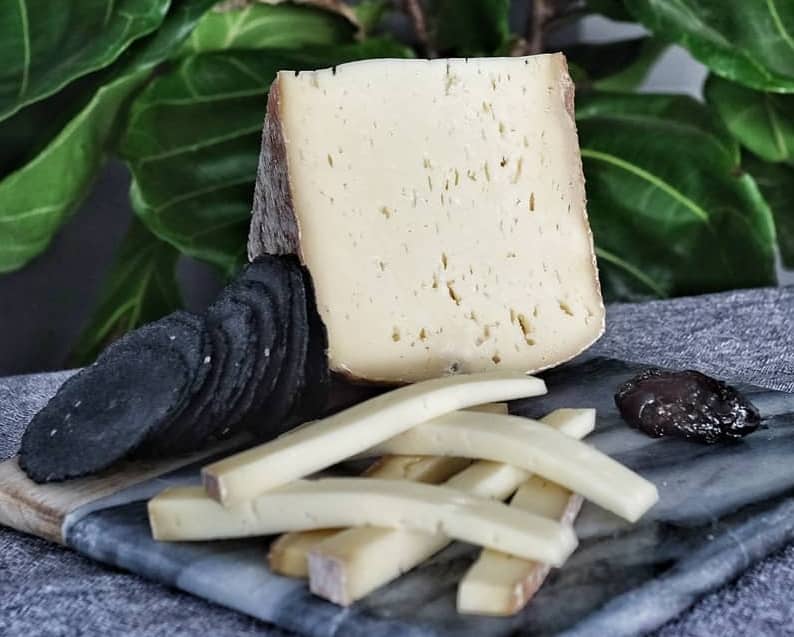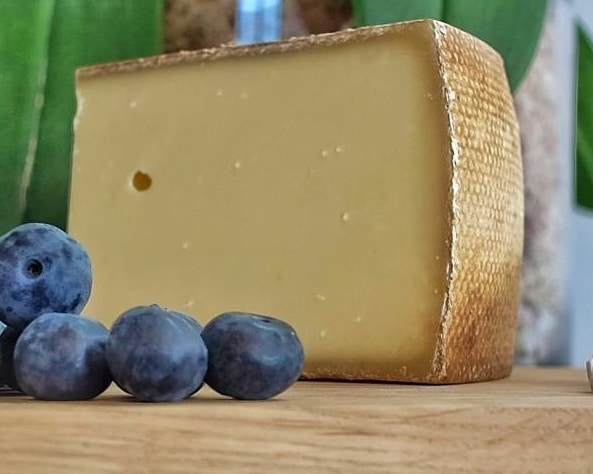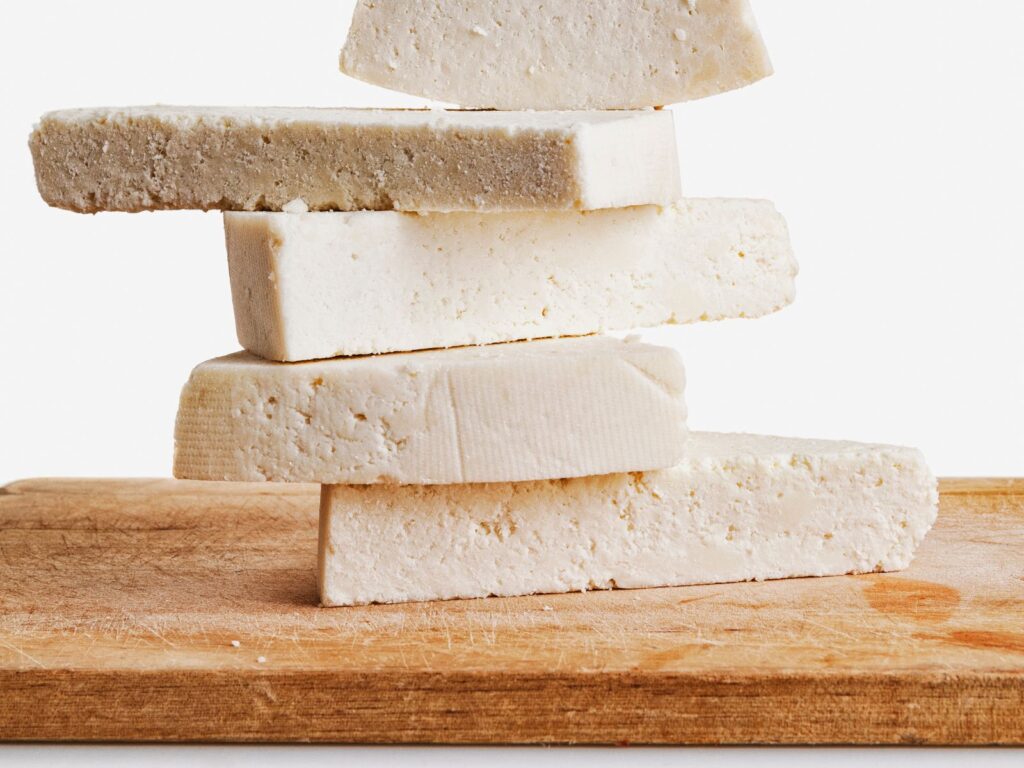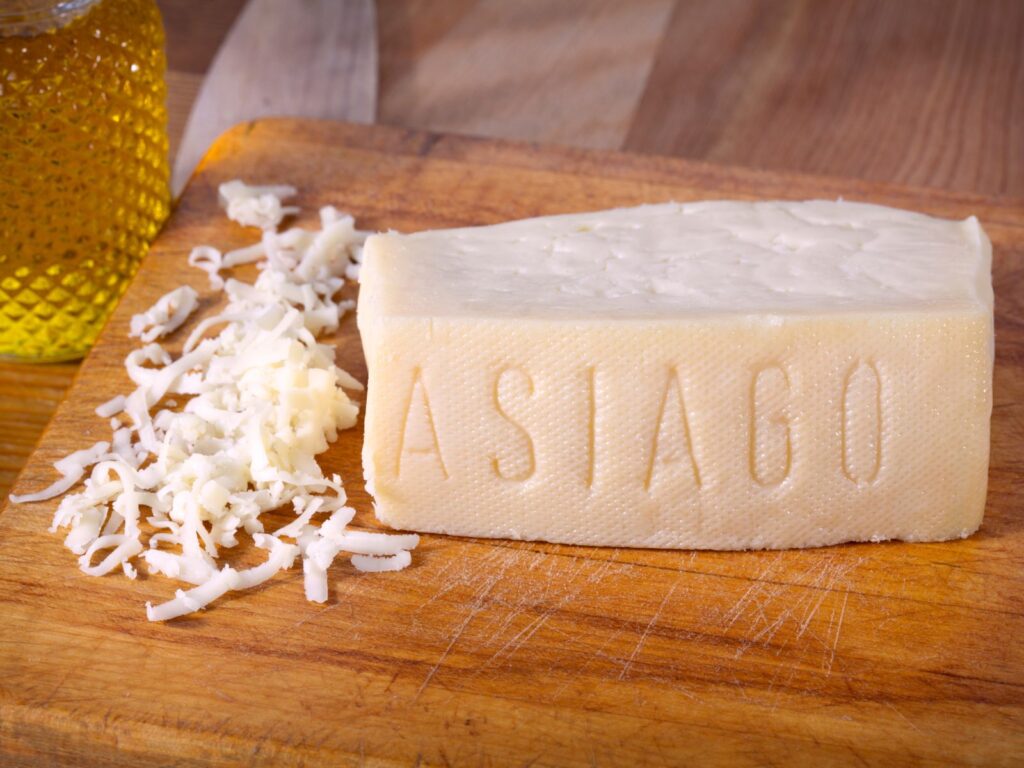Born out of necessity and crafted in a rich historical context, Tilsit has become a versatile and beloved cheese, particularly in Europe. Its distinctive flavor profile and culinary flexibility make it a hidden gem for cheese lovers. This blog post explores the origins, production process, flavor characteristics, culinary uses, and modern significance of Tilsit cheese.

The Origins of Tilsit Cheese
Tilsit cheese takes its name from the town of Tilsit, now known as Sovetsk, in modern-day Russia. The cheese’s origins date back to the 19th century when Swiss immigrants who had settled in Tilsit attempted to recreate their beloved Swiss cheeses. The story begins with Swiss cheesemakers, likely from the Emmental or Gruyère regions, who brought their cheesemaking knowledge to East Prussia (the Tilsit region). However, the local climate, geography, and milk supply were different from those of Switzerland. Hence, the cheese they were trying to replicate didn’t quite turn out as planned.
Instead, they accidentally created something new. The moisture and bacterial cultures unique to the Tilsit region transformed their Swiss-style cheese into something different. The result was a semi-hard cheese with a mild to pungent flavor, depending on how long it aged. Thus, Tilsit cheese was born out of serendipity and adaptation, a product of new conditions and local influences.
Tilsit Cheese Varieties
There are two main varieties of Tilsit cheese: the traditional version, often referred to as “Tilsit”. And a milder, industrially produced version known as “Tilsiter”.
Traditional Tilsit
This version is often described as more complex and robust in flavor. It can range from semi-soft to semi-hard and often has a distinctive aroma. Traditional Tilsit is made with unpasteurized cow’s milk. And tends to have a pungent, tangy taste due to the development of surface bacteria and molds during the aging process. It’s typically produced in smaller batches by artisanal cheesemakers.
Tilsiter
The industrialized version, which is more common today, is produced in larger quantities and has a milder flavor. Tilsiter is made from pasteurized cow’s milk, and the aging process is more controlled. As a result, the cheese is smoother and more approachable for a broader audience. This version is often mass-produced in places like Germany, Switzerland, and Poland.
Both versions of the cheese come in a variety of flavors, ranging from mild and creamy to sharp and aromatic.
How is Tilsit made?
Tilsit cheese is made using cow’s milk, which gives it a creamy texture. The process begins with pasteurization, followed by the addition of starter cultures and rennet to the milk, causing it to curdle. The curds are then cut, drained, and pressed into molds to remove excess moisture.
What distinguishes Tilsit from other cheeses is the unique maturation process. After being pressed, the cheese is aged for several weeks to several months, during which it is frequently washed and turned. The washing of the cheese’s rind plays a crucial role in developing its distinctive flavor, as it encourages the growth of specific bacteria and molds on the surface.
These microorganisms help to create the characteristic aroma and tangy taste of the cheese. In traditional Tilsit cheese, the rind may develop a reddish-orange hue due to the growth of Brevibacterium aurantiacum. This bacterium is commonly associated with strong-smelling cheeses like Limburger.
The industrially produced Tilsiter, however, often undergoes a milder maturation process. A focus on controlling the rind development keeps the flavors more subdued. This variety is aged for a shorter period, resulting in a more delicate flavor and smoother texture.
Flavor Profile and Characteristics
Tilsit cheese is known for its unique combination of flavors and textures. Depending on the variety and how long it is aged, Tilsit can range from mild and buttery to tangy, pungent, and slightly spicy. The texture is semi-soft to semi-hard, with a creamy consistency that becomes firmer as the cheese ages.
- Aroma: Tilsit is often described as having a distinctive, earthy aroma, particularly in its traditional form. The rind-washing process and the development of surface bacteria contribute to its slightly pungent smell, which may remind some of Limburger or Munster cheeses.
- Taste: The flavor profile of Tilsit is quite versatile. Younger cheeses tend to be milder, with a buttery, slightly nutty taste. As the cheese ages, it develops more complex flavors, including tangy, spicy, and slightly acidic notes. The longer-aged varieties also have a stronger aftertaste, making them ideal for those who prefer bolder cheeses.
- Texture: The cheese has a smooth, creamy texture when young, but as it matures, it becomes firmer and crumbly. Traditional Tilsit may also develop small eyes or holes, similar to those found in Swiss cheese, though they tend to be smaller and less pronounced.
Culinary Uses of Tilsit Cheese
Tilsit cheese is incredibly versatile in the kitchen. Its unique flavor and texture make it suitable for a wide range of culinary applications, from simple snacks to more elaborate dishes. Here are a few popular uses:
Cheese Boards
Tilsit’s complex flavor makes it an excellent choice for cheese boards. It pairs well with fresh fruits like apples and pears, as well as nuts and honey. The more pungent varieties are especially good when contrasted with milder cheeses such as Brie or Gouda.
Sandwiches and Melts
Tilsit’s melting properties make it perfect for sandwiches, grilled cheese, or even burgers. Its flavor becomes more pronounced when heated, adding an extra dimension to comfort foods.
Cooking and Baking
Tilsit can be used in a variety of cooked dishes, from casseroles to quiches. Its slightly spicy flavor also works well in sauces, especially when melted over pasta or potatoes.
Fondue
While Swiss cheeses like Gruyère and Emmental are more commonly associated with fondue, Tilsit can also be used for a more robust, tangier fondue experience.
Tilsit Cheese Today
While Tilsit cheese may not have international recognition, it holds a special place in the cheese world, particularly in Europe. It’s commonly found in Germany, Switzerland, and Eastern Europe, where it is appreciated for its bold flavors and culinary versatility.
In recent years, artisanal cheesemakers have sought to revive the traditional methods of making Tilsit, using raw milk and longer aging processes to produce cheeses with more complex and pronounced flavors. This has led to a resurgence of interest in the traditional form of Tilsit, particularly among cheese enthusiasts.
Whether enjoyed as part of a cheese board, melted into a sandwich, or incorporated into more complex dishes, Tilsit cheese is a hidden treasure in the world of dairy. Its blend of Swiss roots and Prussian innovation has made it a cheese with a rich past and an exciting future.



